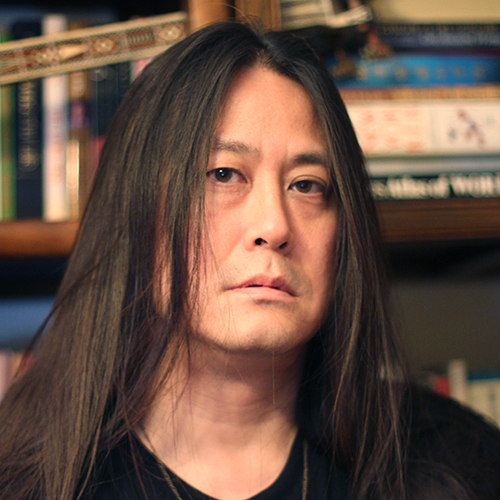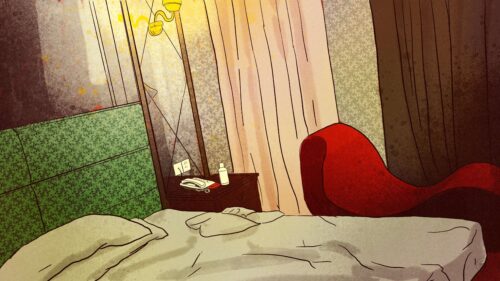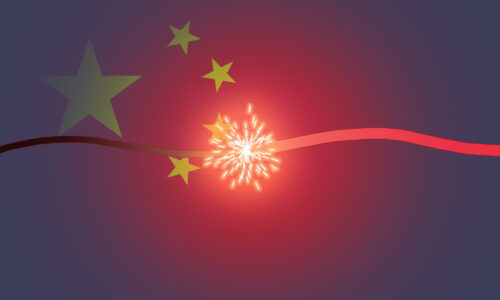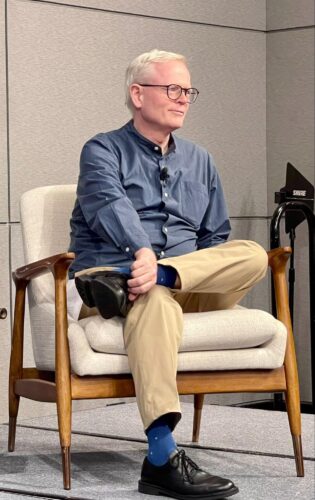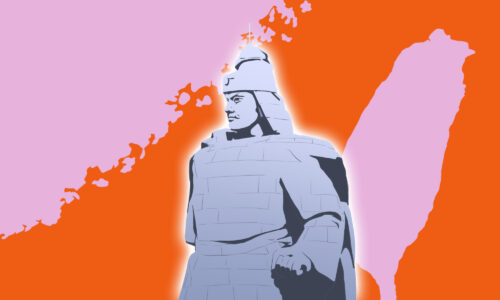The unlikely confluence of events that led to the 1989 Tiananmen Square protests
An almost absurdly unlikely convergence of factors made a protest of Tiananmen's size possible. They were, many who have studied the protests would concur, all out of proportion to the size of the initial grievance.
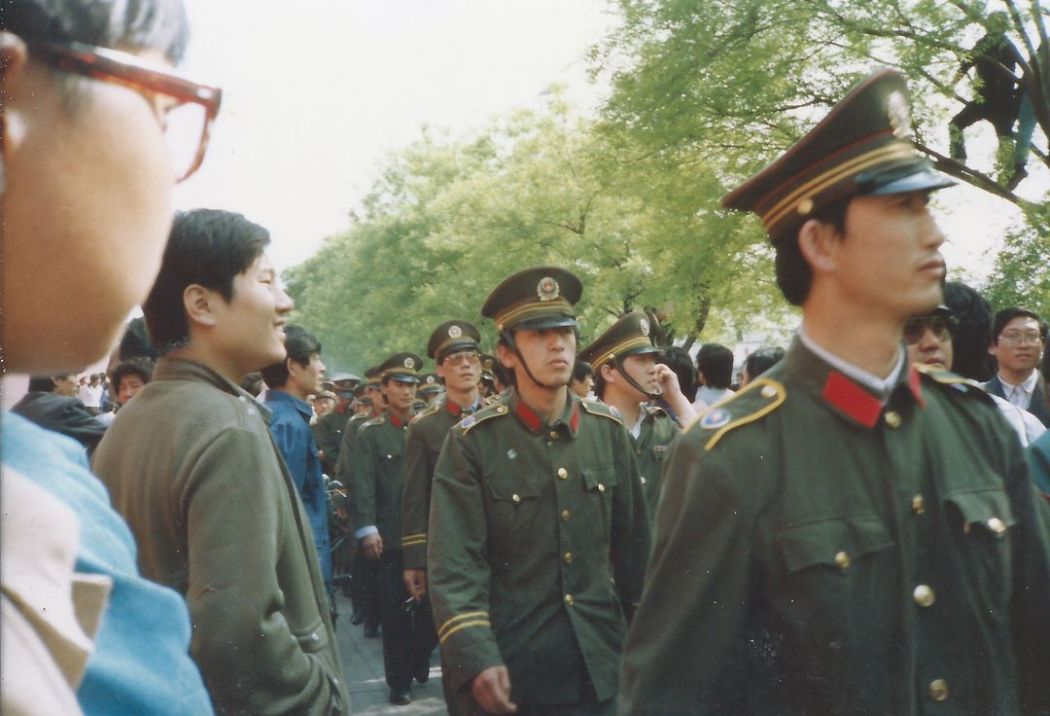
Note: The China Project was taken down by a DDoS attack on the afternoon of June 4, China time, and was hit again about 12 hours later. This post is backdated from June 5, 9:30 pm EST.
This week’s column comes from one of Kaiser’s answers originally posted to Quora on April 4, 2016.
What were the reasons for the outbreak of the Tiananmen Square Protests of 1989?
The proximate reason for the protests was the death on April 15, 1989, of Hu Yaobang, a member at the time of his death of the Chinese Communist Party’s Politburo Standing Committee — the top-tier of the Chinese leadership — and formerly the General Secretary of the Chinese Communist Party. The fact that he was the former general secretary is very significant: He had been removed, but retained his seat on the Politburo Standing Committee, and the reason for his removal was that he had been seen as too lenient (read: too liberal) in his treatment of a relatively minor outbreak of student-led protests in late 1986 and early 1987 in some Chinese cities.
The fact that he had been demoted for his relatively liberal political views made him a natural focal point for students and liberal-leaning intellectuals who wanted to see China deepen its commitments to economic reforms, then nearly a decade old, and to liberalize politically. It was natural, then, that the students and liberal intellectuals would want to commemorate his passing. But what was notable was that he was still a senior Communist Party leader, and for that reason he would be a state funeral and anyone who wanted to publicly mourn Hu Yaobang’s passing effectively had cover. They could take to the streets and praise his name, when in fact they were advocating the reformist agenda he was believed to represent.
Hu Yaobang, by the way, hadn’t been uniformly admired even by those who took his side on the issue of reform. Some think he took things a little too far, for instance, when he supposedly advocated for the use of forks and knives and the abandonment of chopsticks.
In any case, his death gave students a window to march for at least a week, say, before a state funeral could be arranged. They did, and on the second afternoon after his death, they marched from the university district in northwestern Beijing to Tiananmen Square, the political heart of China. The campus of Peking University is a good 18 kilometers from Tiananmen, mind you, so this wasn’t just a little stroll. There were large protests — I happened to be living in China at the time, having graduated from college the previous summer, and went to the Square that night, April 17, from where I was staying in Xisi, not far from the Square.
There had actually been a small core of activists at Peking University and other universities in Beijing who had been planning some kind of commemorative demonstration for some months. They planned for something on May 4th. That’s a very important day in Chinese history, and an especially important one for students and intellectuals. 70 years earlier, on May 4, 1919, Peking University students had led the charge in major demonstrations against the corrupt warlord government that then ruled in Beijing, and against the Western powers and Japan, to which that warlord government had effectively capitulated at the Versailles Conference, which of course settled the Great War. At Versailles, secret treaties between the Allies and the Japanese were revealed. Japan, like China, had joined the war on the side of the Allies — and as a reward, they were to be given former German territories in China. Naturally, China’s patriotic young people saw this as an unpardonable affront, and their protests on May 4 turned quite violent, with the home of one official sacked and burnt, and some of his servants beaten up. Students were arrested and jailed, but protests continued. It was this May 4th Movement, as the whole era came to be known, that was the real debut of the student as a political actor in the 20th century.
A nice round anniversary date — the 70th — was inevitably going to tempt students to some kind of commemoration. But there were other nice round anniversaries that made 1989 especially rich with numerological significance: 1989 was the 200th anniversary of the storming of the Bastille, which inaugurated the French Revolution; and it marked the 40th anniversary of the founding of the People’s Republic of China.
I’ve read, and have been told, that some of the organizers were also involved in organizing earlier student protests that were much less noble in purpose, which took place in the winter of 1988–1989. These were over alleged sexual assaults of Chinese women by African students in Nanjing and, some claimed, in Beijing as well. I was witness to some of these anti-African protests, but have no direct knowledge of the involvement of any of the organizers in the Tiananmen demonstrations that began in April.
Initially, the protests were not couched directly in terms of “democracy.” And the protesters made no effort whatsoever, at first, to include other segments of Beijing society. They were adamant about this. As they marched past Xisi, where I was staying with my grandmother and my college roommate who had by chance arrived from California on the very day that Hu died, I hurried out from the alley to the main north-south street and watched as they marched toward the Square. The marchers on the periphery of the parade held pink colored packaging twine that circumscribed the marchers. It was meant to exclude anyone else. If you weren’t a student from that particular school, you couldn’t just join in their march. They didn’t even want anyone marching beside them: I walked a block maybe, asking questions about what their demands were and what they hoped to achieve, and was basically told to bugger off.
Indeed in the spring of 1989, they might not have gotten much popular support anyway for the agenda that they really wanted: accelerated reforms. By 1988, the economy was said to be “overheating.” There were serious worries about inflation, and a lot of discontent from workers who, accustomed to the famous “iron rice bowl” of Chinese socialism, were now worried over what competition in the labor market — and over the novel expectation that work actually be done at one’s work unit!
Imagine, if you will, a bus making its way down along a mountain road. On one side of the aisle are intellectuals, students, and the newly-minted entrepreneurs — the getihu — who are wondering why the hell the bus is going so slowly. They urge the driver to hit the gas. On the other side, however, are workers and old Party cadres, already rattled by the ride, white-knuckled and pale from fear. They urge the driver to hit the brakes. The passengers on either side couldn’t possibly see eye-to-eye. And yet when the driver finally does hit the brakes, he’s done it only after some nasty potholes that have caused some minor injuries to the people on the “hit the brakes” side. Somehow, everyone is mad at the bus driver: Some over the fact that he hit the brakes at all, the rest over the fact that he didn’t hit them earlier.
Hu Yaobang died during one of the few possible moments when both sides of the aisle could be unified in their anger at the bus driver — that is, when both the strenuous advocates of deepened and expanded reforms and the people who felt most threatened by reform could direct their ire at the Party leadership.
The student leadership was smart: They seized on the issue of corruption, not economic or political conservatism, as their focus. This was something that ordinary people could also latch onto. The students could cloak themselves in the legitimate, patriotic mourning of a fallen Party leader, and could build the momentum without the Party leadership being able to do anything about it.
That Party leadership, too, was quite divided. Zhao Ziyang, who took over as General Secretary after Hu Yaobang’s demotion, was also a committed reformer, and was from the beginning quite sympathetic to the students, doubtless seeing them as a force he could leverage. But he had powerful opponents as well. Much of this was completely opaque, and impossible in that time for anyone to have understood from outside the walls of the leadership compound at Zhongnanhai, but clearly a power struggle was underway.
Bad luck — or good luck, depending on your position — continued to pile up. Beijing was to host, for the first time, a meeting of the Asian Development Bank, scheduled from May 4 to May 6. News bureaus naturally planned to cover this — but wait! What’s this? A big student protest in Tiananmen Square? Better still! When we reflect back on the history of CNN, it’s usually the first Gulf War that comes to mind as the event that really made that 24-hour news network. But really, it was Tiananmen. Students fully understood that the presence of these news cameras was a great boon to them. The Party leadership — that part of it that wanted to end the demonstrations immediately — were on their back foot, unwilling to risk the PR damage a crackdown before all those cameras, right ahead of its big meeting, would create. On May 4th, the big anniversary of the movement named for that date in 1919, over a million people were in Tiananmen Square.
Ahead of that, on April 26, the Party sent what it believed would be read as an unequivocal message to the students: a front-page editorial in the People’s Daily, the Party’s flagship paper, titled “It is Necessary to Take a Clear Stand Against Disturbances,” which said essentially that the student protests had moved from a healthy expression of patriotism to anti-Party hooliganism. By then, though, flush with their early successes, feeling protected, and believing as students will in the righteousness of their cause, they basically shifted, then, into a mode of opposition.
Besides, many reasoned, Mikhail Gorbachev was going to be visiting China soon: He would arrive on May 15, and they believed — perhaps in this they were correct — that they could still protest and occupy the Square with impunity at least until then.
This account has now gone beyond the original scope of the question — the reasons for the protest. But it’s important, I think, to understand the almost absurdly unlikely convergence of factors that made protests of this size at all possible. They were, many who have studied the protests would concur, all out of proportion to the size of the initial grievance. The tinder was damp, and yet it caught fire. This is not a lesson that the Party leadership has since forgotten.
Kuora is a weekly column.
